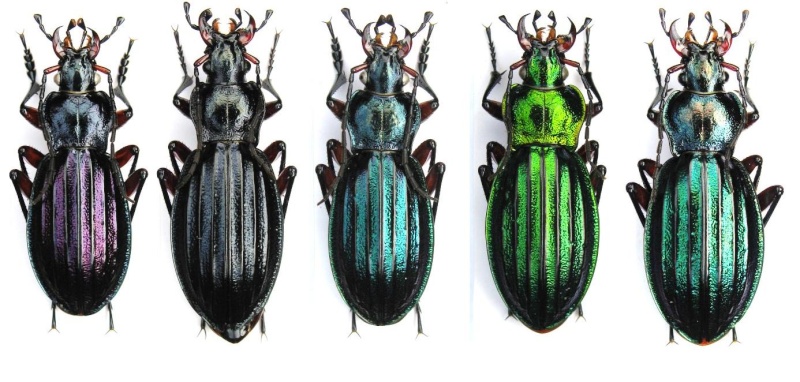|
|
Post by panacanthus on Sept 19, 2021 17:33:29 GMT -8
Color forms of Anoplostethus laetus from Australia...  |
|
|
|
Post by trehopr1 on Sept 19, 2021 18:16:48 GMT -8
Wonderful, simply wonderful...
And to think (that I thought) it was only Lamprima and Chrysina which hosted such a pallette of gorgeous colors !
|
|
|
|
Post by wollastoni on Sept 20, 2021 4:38:38 GMT -8
Wonderful, simply wonderful... And to think (that I thought) it was only Lamprima and Chrysina which hosted such a pallette of gorgeous colors ! Some Carabus species like Carabus auronitens in W. Europe have a lot of rare colour variations too :  |
|
|
|
Post by gaspipe on Sept 20, 2021 8:17:54 GMT -8
Which color is least common?
|
|
|
|
Post by trehopr1 on Sept 20, 2021 8:59:01 GMT -8
Indeed Olivier, there are some very nice Carabid species which also offer a pallette of color variation.
I am aware of them but, they just weren't the first things that came to mind...
Thank you for the reminder.
|
|
|
|
Post by panacanthus on Sept 20, 2021 9:12:28 GMT -8
Which color is least common? If you are referring to the A. laetus, I would list them as follows. However this is only from my own experience in seeing them on the market or in photos. A person in Australia who actually catches them may not put them in exactly the same order. One thing which is certain however is that shades of green would be the normal color and anything else is quite uncommon. With least common being #1: 1 - blue 2 - orange 3 - purple 4 - red 5 - lime green 6 - green The order of 1 through 3 is highly debatable. I’ve seen only one of each for sale, so I’m also judging by photos I’ve seen of specimens in collections. I’ve seen several reds for sale. Lime green is only a slight variation and only slightly rare. Green is the normal color. There is a big jump between 4 and 5 in rarity. |
|